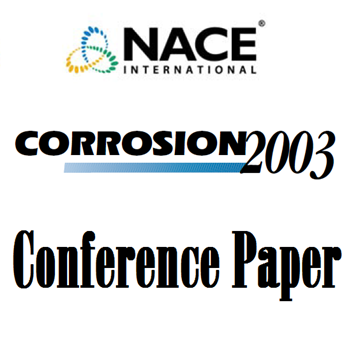Search
03624 MOLECULAR MODELING OF BINARY CORROSION INHIBITORS
Also Purchased
03615 FIBERGLASS-REINFORCED PLASTIC (FRP) CHEMICAL RESISTANCE IN 100°C ( 212°F) WET CHLORINE GAS AND ANOLYTE
Product Number:
51300-03615-SG
ISBN:
03615 2003 CP
$20.00
03611 Thermoplastic Dual Laminate Applications - The Good and the Bad
Product Number:
51300-03611-SG
ISBN:
03611 2003 CP
Publication Date:
2003
$20.00
03607 Evaluation of the Adhesive Properties of Downhole Corrosion Resistant Polymeric Coatings Determined by Cathodic Disbondment
Product Number:
51300-03607-SG
ISBN:
03607 2003 CP
$20.00
Recently viewed



